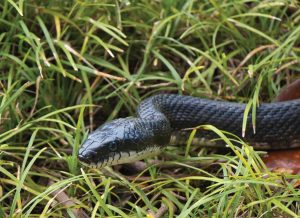My wife had my immediate attention when she said, “There is a small squirrel under the bird feeder.”
I rushed to the window, expecting to see a young fox squirrel or maybe a gray squirrel. Instead of just one squirrel, there were two tiny red squirrels snacking on fallen sunflower seeds under the feeder.
My rush to check out the current squirrel situation was due to a “Houdini” fox squirrel having recently gained access to the sunflower seed feeder.
For two or three years, the baffle on the feeder’s support pole had kept the squirrels at bay and protected the feeder. Now I find “Houdini” figured out how to climb the pole and jump from underneath the baffle to reach the bottom lip of the feeder. Time and time again, the wasteful little varmint would raid the feeder and dump all of the seeds on the ground.
Circumstances called for quick, decisive action. I called my daughter Jacqueline, and she promptly ordered an extension for the feeder pole.
Once the 14-inch extension to the shepherd’s hook was installed, “Houdini” could no longer jump from the pole below the baffle and reach the feeder. Problem solved. However, I did have to make a notched “gitchie stick” to bring down or lift up the bird feeder since I could no longer reach the hook. I consider the slight inconvenience a small price to pay for sunflower seed security.
Identifying the squirrels in your neighborhood is not difficult. Start by sizing them.
The smallest is the ground squirrel or chipmunk. Its body is about 3.5-4 inches long and weighs about 4 ounces. The tail is almost as long as the body, but the tail isn’t bushy. When scampering about, the chipmunk generally holds its tail straight up.
Next in size is the red squirrel, also known as the “piney.” They are reddish in color and about twice the size of a chipmunk. Red squirrels have bushy tails and are continually on the move.
Then there is the eastern gray squirrel. It is twice the size of a red squirrel, weighing in at 1-1.5 pounds. It is gray in color, as the name suggests, and has a bushy tail.
Last, but definitely not the least, is the fox squirrel. Reddish brown in color, the big boy can weigh in at well over 2 pounds and is North America’s largest squirrel.
There is also a variant among gray and fox squirrels, which produces a black squirrel. They are historically found in some northern states and Canada. I’ve seen them in southern Michigan, and they are striking.
 Another exception to the coloration pattern of common squirrels is the piebald or white squirrel. Mostly found in eastern gray squirrels but sometimes in fox squirrels as well, there is a mutant gene causing parts of the hair on the squirrel or the whole squirrel to be white.
Another exception to the coloration pattern of common squirrels is the piebald or white squirrel. Mostly found in eastern gray squirrels but sometimes in fox squirrels as well, there is a mutant gene causing parts of the hair on the squirrel or the whole squirrel to be white.
Native Americans considered the white squirrels to be “spirit squirrels” and held them in great reverence.
In my 70-plus years, I’ve had the pleasure of seeing two of these rare creatures. I will always treasure these outdoor encounters.
I’m not totally heartless when it comes to the welfare of our squirrels. Even though I ban the squirrels from easy access, every time I fill the bird feeder, I “accidently” spill a large scoop of sunflower seeds on the concrete slab for our tree critters.










